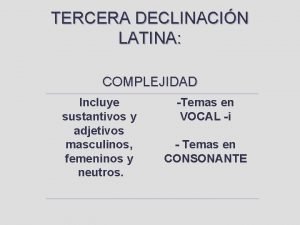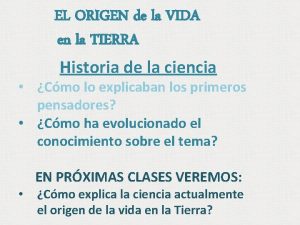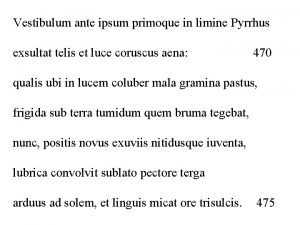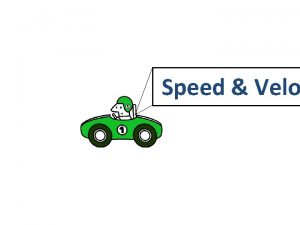Linear Motion Lex I Corpus omne perseverare in













- Slides: 13

Linear Motion

• Lex I: Corpus omne perseverare in statu suo quiescendi vel movendi uniformiter in directum, nisi quatenus a viribus impressis cogitur statum illum mutare. • Every object in a state of uniform motion tends to remain in that state of motion unless an external force is applied to it. Law of Inertia - Newton’s First Law

Some Definitions and Ideas • Motion is relative – to something else! • Speed – distance/time • To go from my house to school takes me 30 minutes – it is 40 km • What was my: – Average speed – Instantaneous speed

• To go from the Earth to the moon takes about 3 days by Apollo capsule – what was the average speed? (400, 000 km) • Do you think the average speed is meaningful in this example?

• Velocity • Vector and scalars • Constant Velocity • Changing Velocity Dv

• The speedometer of a car moving northward reads 60 km/hr. It passes another car that travels southward at 60 km/hr. • Do both cars have the same speed? • Do both cars have the same velocity?

• Changing Velocity Dv • aka – Acceleration • Acceleration = Change in Velocity/time • Something is accelerating when it changes it’s velocity!

Free Fall – Wheeee! 0 Seconds 0 m/s 1 second 10 m/s 2 seconds 20 m/s 3 seconds 30 m/s Acceleration = Change in Velocity/time = 10 m/s / 1 s = 10 m/s/s or 10 m/s 2

How Fast? ? ? Instantaneous speed = acceleration x elapsed time v = gt Speed or Velocity = gravitational acceleration x time Gravitational acceleration on Earth is 9. 8 m/s 2 Which we round to 10 m/s 2 If a rock falls for 10 seconds, how fast is it going when it hits you? ? ?

How Far? ? ? • Now you have to put the idea of average velocity together with time and acceleration. • • • In the first second – how far did it fall? Velocity to start? 0 m/s Velocity at end of 1 second? 10 m/s Average Velocity = d=vt =>>>

d = 1/2 gt 2


 Corpus omne perseverare
Corpus omne perseverare La lex rogata
La lex rogata Lex orandi
Lex orandi Latinismos
Latinismos Oogenesis
Oogenesis Stroma
Stroma Omnis omne declinación
Omnis omne declinación Non omne quod licet honestum est significado
Non omne quod licet honestum est significado Omne genu flectatur
Omne genu flectatur Omne vivum ex ovum
Omne vivum ex ovum Tum vero omne mihi visum
Tum vero omne mihi visum Range of motion definition
Range of motion definition What is the formula of simple harmonic motion
What is the formula of simple harmonic motion An object in motion stays in motion
An object in motion stays in motion






















